| Umělec magazine 1999/4 >> The Stubborn’s Recipe Book | List of all editions. | ||||||||||||
|
|||||||||||||
The Stubborn’s Recipe BookUmělec magazine 1999/401.04.1999 Tomáš Pospiszyl | reviews | en cs |
|||||||||||||
|
The art group Stubborn’s showing in 1987 significantly influenced Czech art of this century’s last decade. It was as if a new era opened up with the Stubborn and other artists of their generation. That is what we thought at least during their first exhibition at the Popular House in Prague’s Vysočany twelve years ago. Even though the Stubborn have not existed as a group for several years now, they got together and organized an exhibition in the Waldstein Riding Hall in May.
Starting an art group at the brink of the 1990‘s seems to be anachronism from today’s view. A tight group, shielded by a manager, however had a chance to accomplish what a stand-alone artist could never do - organize their own official exhibition and break through into media. In addition to practical and tactical reasons, the Stubborn also came across as a group with similar artistic esthetic in the Popular House. Their contemporary exhibition at the Waldstein Riding Hall is not composed chronologically, it does not follow the individual personalities, nor does it track themes. Everything is mixed up together in a colorful collage which, above anything else, shows how the individual members of the group became artists during the past decade and how their worlds are becoming more and more distant. Still, the way the exhibition is installed tempts one to think of the entire group as one general organism. The element of the past is represented by the fact that the group of ten artists did not include a single woman. As if art was just a “guy thing“! However new the works of the Stubborn felt at the end of the 1980‘s, we may clearly find continuity with older Czech art. It is specifically their spiritual link and identical themes with the art of the turn of the century, with works by Jan Zrzavý, František Bílek, Josef Váchal and others. This remarkable kinship is clearly visible also in the Prague City Gallery’s permanent exhibition at the Golden Ring House. In this connection, (deceased Czech art critic) Jindřich Chalupecký is often quoted as saying that the Stubborn were not interested in post-modernism and its program epigonism. While it may be true that the Stubborn do not quote the symbolist, early avant-garde and imaginative art, it would be more correct to say that they carry on with it. This tradition may also include a position of intentionally cultivated heresy, continual stubborn search for difference from common programs. The Stubborn, however, are perhaps different only by their great deal of irony but otherwise their art operates in the world of myths, symbols, subconscious, archetype, fetishized science and fashion. With a few exceptions, we would not find response to hot contemporary issues, nor exploration of formal and clearly esthetic issues. The exhibition feels like an evidence of remarkable energy with which the artists plunge into production of their work. As if they wanted to show off how much they have managed to produce over the past 15 years, what they put their hands on. To them, art is joy, life-time hobby. Compared to international art, you are immediately struck by the hand-made or DIY phenomenon of their work, a sort of proud, at times ironical artistic cottage life-style. It is as if the nation of TV’s DIY star Přemek Podlaha also had its corresponding avant-garde. But since we are not in his TV show, we will not find an electronically controlled hen-coop, nor will we learn how many useful things we can make out of a plastic bottle, nor a tip how to turn our old Jawa bike into a nice little tractor. Some of the artists do not only admit this hand-made approach, in work of some them it even become their very topic - DIY may be both its content and form. This is the fortunate case of František Skála, while Michal Gabriel’s experiments with connecting figure and electronics rather show inconnectivity of the two, in his approach at least. His work is stronger when he works with the figure alone. On the contrary, recent works by Stefan Milkov are not that different from those he made ten year ago. Petr Nikl managed to revive his art without the necessity to change his topics and photography comes as help to his way of working and thinking which is closer to theater than painting. Zdeněk Lhotský is a bit beside the exhibition as he shows “only“ applied art that appears to be a bit lost in the surrounding mummery. I believe that his work, if standing alone, would come through better. Čestmír Suška’s column forms the central axis of the entire exhibition and it is undoubtedly one of his better pieces. His works made of wood lacks the accidental character of plaster and laminate, their scale does not give a feeling that the statue is neither too big nor too small. Suška’s solo exhibition might be a surprise in the future. It is fantastic to see Jaroslav Róna’s early paintings again, full of energy and natural painterly feeling. His recent works, however, appear tired, wanted and academic. I would like to see his sketch book or drawings which, as I hope, are not so intentional. I found Stanislav Diviš’ cycle Remains the nicest paintings of the exhibition. Those seemingly contentless paintings were based on purely esthetical concept and Diviš, sometimes too painstakingly black and white, unexpectedly shows great feeling for color and painterly rendering. My favorite work by Jiří David is perhaps his black and white flag of the Czech Republic: a clear work at first sight from which no effort is sticking out. I am asking myself whether Jiří David would be an artist if he was living at a deserted island. I am wondering what he would do there. I will never find out, though, because David will never leave anywhere and he will never stop being an artist in the Czech Republic. Painting exactly, or almost exactly after a photograph is unjustified yet very common cottage-style symptom here. We might point out that many of the artists also show real photographic work. Why, then, do they get to paint after the photographs? Why do they try to use paint and brush to reach effects they could easily reach by using a photograph? It seems to me as if they were transcribing documentary prose into a bound poetry book just because it is more “artistic“, more hand-made. Is it an attempt at strengthening the art work’s aura? Why is the photographic artwork itself so important then? The Stubborn’s most important characteristics include playfulness which ranges from exploring infancy to pleasant hooliganism. The farther the art of the Stubborn gets from the Czech border, the less understandable it becomes. It is non-cosmopolitan and non-universal, formally traditional or intentionally reactionary, it does not give in to trends - this does not mean that all those characteristics are necessarily negative. It is simply art from some place, from the Czech Republic at the end of millenium. There were other periods when the most important Czech artists found themselves in a position of stubborn commentators of their own, unpopular, untrendy truth. The critics could never understand them. They were going alone against the mainstream and they managed to transform often unbearable reality of local life into art (Franz Kafka, Josef Váchal, Zdeněk Pešánek, Bohumil Hrabal). Just as any avant-garde art, art of the 20th Century had to vindicate itself somehow, find reasoning of its difficult comprehension, find its own role. Efforts to find out what avant-garde is good for at all are one of the problems of this century’s art and often represent a key to understanding its essence. This issue has been raised both in Europe and in America. The solutions offered, often completely simplifying the matter, were eagerly accepted by entire masses of artists (let’s remind just the 1950‘s). Art was not only backed up by trivial ideology, its arguments included mainly philosophy, religion, psychology, mysticism, art itself, spirituality, “human being“, “inner truth“, “life“, among other things. Aforementioned Jindřich Chalupecký managed to place art’s goal to both modern life and the transcendental. In Bohemia, art’s symbolic feature is of special significance - art exists because it is telling us something, and due to local romantic tradition it is telling it to us in a metaphorical language. This is where its biggest strength lies as well. Naturally, this can be a double edged sword. Czech art if often cast in a veil of unreality, fantasy, imagination, illustration. Art works stumble under the weight of the task of mediator of various stories and symbolic meanings. The Stubborn’s current exhibition lets us see all those features very well.
01.04.1999
Recommended articles
|
|||||||||||||
|
04.02.2020 10:17
Letošní 50. ročník Art Basel přilákal celkem 93 000 návštěvníků a sběratelů z 80 zemí světa. 290 prémiových galerií představilo umělecká díla od počátku 20. století až po současnost. Hlavní sektor přehlídky, tradičně v prvním patře výstavního prostoru, představil 232 předních galerií z celého světa nabízející umění nejvyšší kvality. Veletrh ukázal vzestupný trend prodeje prostřednictvím galerií jak soukromým sbírkám, tak i institucím. Kromě hlavního veletrhu stály za návštěvu i ty přidružené: Volta, Liste a Photo Basel, k tomu doprovodné programy a výstavy v místních institucích, které kvalitou daleko přesahují hranice města tj. Kunsthalle Basel, Kunstmuseum, Tinguely muzeum nebo Fondation Beyeler.
|



















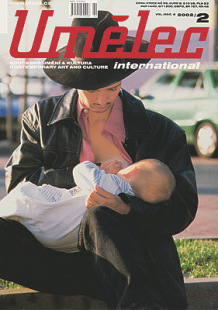




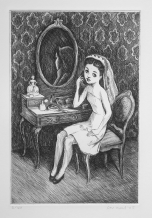
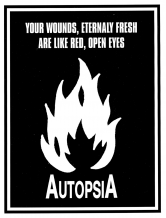
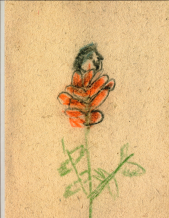
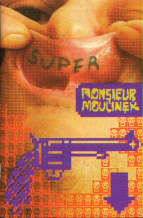


 New book by I.M.Jirous in English at our online bookshop.
New book by I.M.Jirous in English at our online bookshop.
Comments
There are currently no comments.Add new comment